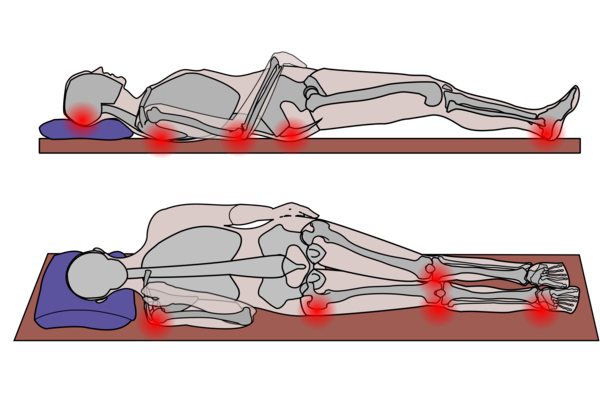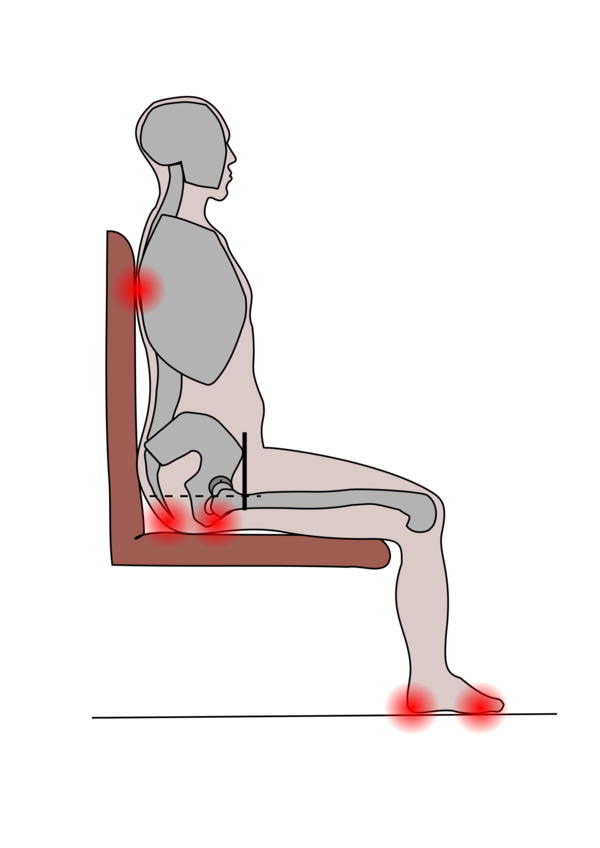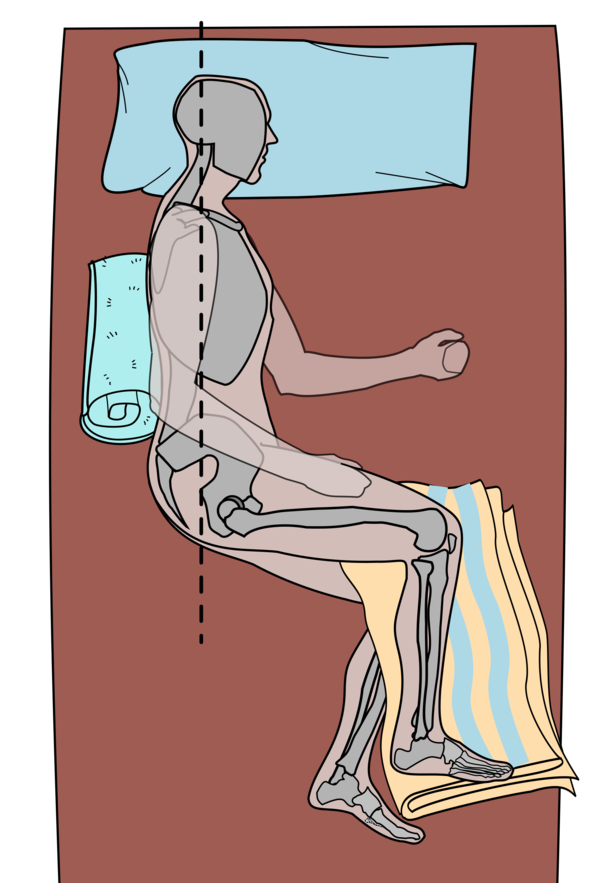Pressure ulcers and posture
Pressure ulcers and posture
Pressure ulcers (sores) are damage to the skin and underlying body tissue caused by unrelieved pressure on bony body parts. They can occur very quickly and can have devastating consequences. If you find yourself spending a long time in one position, here are a few ways to help reduce your risk:
- Pressure ulcers can develop from a lack of movement – try and move as often as you can
- Check skin in at-risk areas of the body: buttocks, sacrum (or tailbone), hips, ankles, heels

- Sit out in a chair where it is safe and practical to do so – an hour makes a difference
- Consider seat set-up in relation to areas of the body. Your posture can change over time
- Pay attention to sitting or lying postures that can increase pressure risk to vulnerable areas
- If you are in bed and moving less, use supports to help keep your shoulders in line with your hips, support the legs if needed. Try to avoid staying in a rotated (twisted) position
- Use pillows, cushions or folded, soft towels/blankets if official bed positioning equipment is not available
- Don’t forget the feet. Offload heels where possible.
Seat set up
It is important to consider how your seat can affect your risk of developing pressure ulcers.
Consider:
- Seat too wide – Buttocks, elbows at risk
- Seat too narrow – Hips at risk
- Seat too high – Sacrum, buttocks, back of thighs at risk
- Seat too low – Buttocks at risk
- Seat too deep – Sacrum, buttocks at risk

Also, the following are important to consider:
- Using the recline function might increase pressure over sacrum
- Lifting the legs can increase pressure over sacrum
- Tilt can be used to reduce pressure to the pelvis
- Consider impact of additional cushions, this could make the chair too high for someone


Don't forget the feet
Feet can become vulnerable to pressure ulcers, free float the heels where possible to reduce risk.
Make sure any equipment issued for the feet is fitted correctly.


Contractures (muscle tightening)
Prolonged bed rest can lead to the development of contractures (muscle tightening).
- Contractures create pressure on areas of the body that aren’t normally loaded
- Body parts contacting with each other can cause further risk
- Encourage alignment of shoulder and hip; support the legs if needed
- When sitting is not possible other measures should be taken to promote best possible flexibility
- Bed supports will not only benefit long term function and posture but also prevent against uneven pressure on certain parts of the body.

Images: copyright PUPIS/Helen Frost
Rydym yn croesawu gohebiaeth a galwadau ffôn yn y Gymraeg neu'r Saesneg. Atebir gohebiaeth Gymraeg yn y Gymraeg, ac ni fydd hyn yn arwain at oedi. Mae’r dudalen hon ar gael yn Gymraeg drwy bwyso’r botwm ar y dde ar frig y dudalen.
We welcome correspondence and telephone calls in Welsh or English. Welsh language correspondence will be replied to in Welsh, and this will not lead to a delay. This page is available in Welsh by clicking ‘Cymraeg’ at the top right of this page.